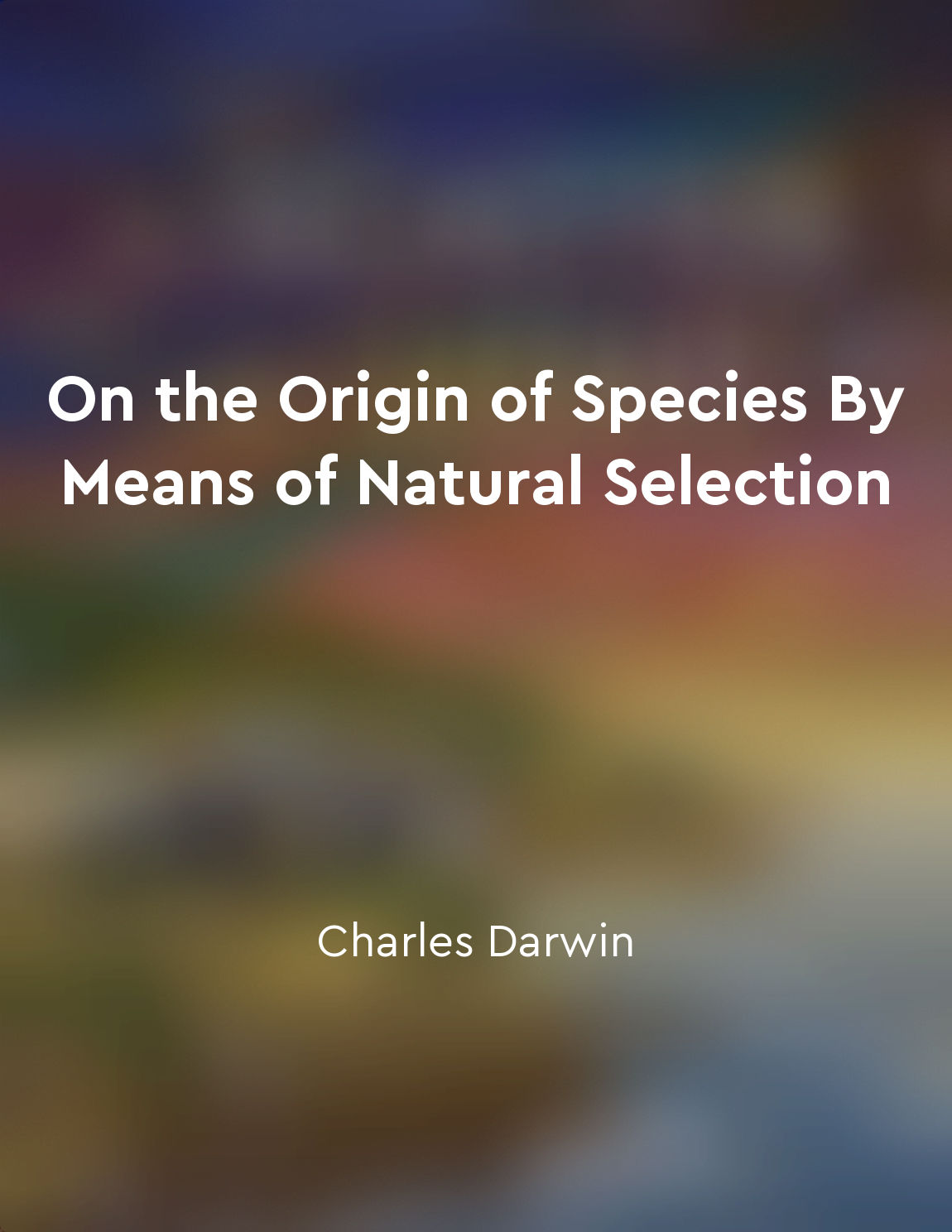Reproduction of successful variations from "summary" of On the Origin of Species By Means of Natural Selection by Charles Darwin
When we look at the vast and complex world of living organisms, we see a multitude of variations among individuals within a species. These variations are not random or chaotic, but rather the result of a long process of natural selection. Through the mechanism of natural selection, organisms with advantageous variations are more likely to survive and reproduce, passing on those beneficial traits to future generations. The key to understanding this process lies in the concept of reproduction of successful variations. Successful variations are those traits or characteristics that give an individual a competitive advantage in its environment. For example, a bird with a longer beak may be better able to reach food in a particular type of tree, giving it a higher chance of survival and reproduction compared to birds with shorter beaks. As these successful variations are passed on through reproduction, they become more common within a population. Over time, this can lead to significant changes in the overall characteristics of a species, as certain traits become more prevalent and others diminish. This gradual process of change is what we observe when we look at the diversity of life on Earth. It is important to note that not all variations are successful, and not all successful variations will persist in the long term. The environment is constantly changing, and what may be advantageous in one context may be detrimental in another. Therefore, the process of natural selection is ongoing, with new variations constantly being tested and refined through the filter of reproductive success.- The reproduction of successful variations is the driving force behind the evolution of species. It is through this process that life has adapted and diversified over millions of years, leading to the incredible array of organisms we see today. By studying and understanding this concept, we gain valuable insights into the mechanisms that shape the natural world and the interconnectedness of all living things.
Similar Posts
Robustness allows systems to tolerate external perturbations
One key characteristic of complex systems is their ability to withstand external disruptions or perturbations. This attribute, ...
The immune system protects the body from pathogens
The immune system is a complex network of cells, tissues, and organs that work together to defend the body against harmful path...
Genetics confirms the relatedness of all life forms
The study of genetics has revolutionized our understanding of the natural world. By examining the genetic code of different org...
The power of explanation
Explanation is a powerful tool that humans possess. It allows us to make sense of the world around us, to understand why things...
Genes interact with environment to influence traits
Genes are not solitary actors in the drama of inheritance. They do not simply dictate our traits, independent of external influ...

Variation is key to diversity
The fact that variations are indispensable for the production of new forms and for representing distinct species is evident. Va...

Random mutations contribute to genetic diversity
Random mutations are a key factor in the process of evolution, as they have the potential to introduce new variations in the ge...
Patterns in nature demonstrate the process of evolution
The patterns we observe in nature provide a window into the intricate processes of evolution. These patterns, whether manifeste...
Complexity can arise through bottomup processes
The idea that complexity can arise through bottom-up processes is a fundamental concept in the study of evolution. This concept...


